Volume 14, Issue 3
Displaying 1-14 of 14 articles from this issue
- |<
- <
- 1
- >
- >|
Contents
-
2018Volume 14Issue 3 Pages Toc_1-Toc_4
Published: 2018
Released on J-STAGE: December 15, 2019
Download PDF (1149K)
Foreword
-
2018Volume 14Issue 3 Pages 197
Published: 2018
Released on J-STAGE: December 15, 2019
Download PDF (1669K)
Special Issue: LCA of Marine Products
Commentary and Discussion
-
2018Volume 14Issue 3 Pages 198-206
Published: 2018
Released on J-STAGE: December 15, 2019
Download PDF (1364K) -
2018Volume 14Issue 3 Pages 207-212
Published: 2018
Released on J-STAGE: December 15, 2019
Download PDF (2394K) -
2018Volume 14Issue 3 Pages 213-218
Published: 2018
Released on J-STAGE: December 15, 2019
Download PDF (1408K)
General Articles
Case Study Research Article
-
2018Volume 14Issue 3 Pages 219-227
Published: 2018
Released on J-STAGE: July 25, 2018
Download PDF (2375K)
Report
-
2018Volume 14Issue 3 Pages 228-231
Published: 2018
Released on J-STAGE: December 15, 2019
Download PDF (1277K) -
2018Volume 14Issue 3 Pages 232-233
Published: 2018
Released on J-STAGE: December 15, 2019
Download PDF (5635K) -
2018Volume 14Issue 3 Pages 234-235
Published: 2018
Released on J-STAGE: December 15, 2019
Download PDF (3315K)
Column
-
2018Volume 14Issue 3 Pages 236
Published: 2018
Released on J-STAGE: December 15, 2019
Download PDF (1012K)
Introduction of Research Group
-
2018Volume 14Issue 3 Pages 237-238
Published: 2018
Released on J-STAGE: December 15, 2019
Download PDF (10348K)
Introduction of Supporting Corporate Members
-
2018Volume 14Issue 3 Pages 239-241
Published: 2018
Released on J-STAGE: December 15, 2019
Download PDF (1672K)
Supporting Members
-
2018Volume 14Issue 3 Pages 242
Published: 2018
Released on J-STAGE: December 15, 2019
Download PDF (968K)
All about ILCAJ
-
2018Volume 14Issue 3 Pages 243-253
Published: 2018
Released on J-STAGE: December 15, 2019
Download PDF (1416K)
- |<
- <
- 1
- >
- >|
